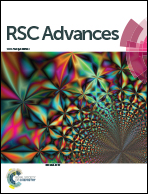Solid lipid nanoparticle enhances bioavailability of hydroxycitric acid compared to a microparticle delivery system
Abstract
Solid lipid nanoparticles (SLN) are the most promising delivery system that improves the stability, bioavailability and controlled release of food bioactive compounds. The delivery of any bioactive compound to targeted sites is directly affected by particle size and thus a nano delivery system has the potential to enhance bioavailability, the controlled release of the bioactive compounds, to a greater extent than microencapsulation. However, the effect of different particle sizes on the bioavailability of the active compound has been less explored. Moreover, nanoencapsulation of hydrophilic compounds by SLN technique has not been much studied due to the complexity involved in non-compatibility between the hydrophilic core and lipophilic wall matrix. Hence, in order to improve the efficiency of SLN to load the hydrophilic molecules and to evaluate the effect of micro and nanoparticles on the bioavailability, HCA, a model hydrophilic compound was nanoencapsulated using solid lipid nanocarriers. The HCA loaded SLN (327 nm) exhibited an encapsulation efficiency of about 57% and excellent storage stability with retention of 82% HCA and 558 nm particle size during 50 days of storage. Moreover, in simulated gastrointestinal conditions, SLN-HCA exhibited higher gastrointestinal stability (about 88%) for HCA with better retention of particle size and it also showed excellent controlled release of HCA. On comparison of bioavailability, HCA loaded nanoparticles (SLN-HCA) had 2 fold higher bioavailability than unencapsulated HCA and 1.3 fold higher bioavailability than the microparticles (SLM-HCA) due to smaller particle size, longer residence time and controlled release of HCA.


 Please wait while we load your content...
Please wait while we load your content...